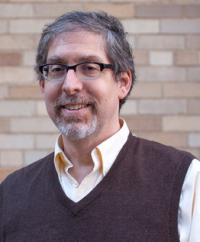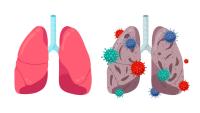Jeffrey Shaman, PhD
- Professor of Environmental Health Sciences
- Professor of Climate, Climate School
On the web

Overview
Jeffrey Shaman is a Professor in the Department of Environmental Health Sciences at the Columbia University Mailman School of Public Health. He studies the survival, transmission and ecology of infectious agents, including the effects of meteorological and hydrological conditions on these processes. Work-to-date has primarily focused on mosquito-borne and respiratory pathogens. He uses mathematical and statistical models to describe, understand, and forecast the transmission dynamics of these disease systems, and to investigate the broader effects of climate and weather on human health.
Office Location: 722 West 168th Street, ARB 1104C
Academic Appointments
- Professor of Environmental Health Sciences
- Professor of Climate, Climate School
Administrative Titles
- Interim Dean, Climate School
- Member, Columbia Center for Environmental Health and Justice in Northern Manhattan
- Faculty Chair, Earth Institute
- Associate Member, Data Science Institute
Credentials & Experience
Education & Training
- BA, 1990 University of Pennsylvania
- MA, 2000 Columbia University
- PhD, 2003 Columbia University
Committees, Societies, Councils
Center for Communicable Disease Dynamics
Sackler Institute for Comparative Genomics, American Museum of Natural History
Research
Research Interests
- Environmental Health
- Infectious Diseases
Selected Publications
Lewandowski SA, Kioumourtzoglou MA, Shaman JL. Heat stress illness outcomes and annual indices of outdoor heat at U.S. Army installations. PLOS ONE, 17(11):e0263803, doi,10.1371/journal/pone.0263803, 2022.
Yang W, Shaman J. COVID-19 pandemic dynamics in India, the SARS-CoV-2 Delta variant and implications for vaccination. Journal of the Royal Society Interface, 19(191):20210900, doi:10.1098/rsif.2021.0900, 2022.
Lynch VD, Shaman J. The effect of seasonal and extreme floods on hospitalizations for Legionnaires’ disease in the United States, 2000-2011. BMC Infectious Diseases, 22:550, doi:10.1186/s12879-022-07489-x, 2022.
Pei, S., S. Kandula, J. Cascante-Vega, W. Yang, S. Foerster, C. Thompson, J. Baumgartner, S.D. Ahuja, K. Blaney, J.K. Varma, T. Long and J. Shaman. Contact tracing reveals community transmission of COVID-19 in New York City. Nature Communications, 13:6307, doi.10.1038/s41467-022-34130-x, 2022.
Yang W, Shaman J. COVID-19 pandemic dynamics in South Africa and epidemiological characteristics of three variants of concern (Beta, Delta, and Omicron). eLife, 11:e78933, doi:10.7554/eLife.78933, 2022.
Schneider T, Dunbar ORA, Wu J, Boettcher L, Burov D, Garbuno-Inigo A, Wagner GL, Pei S, Daraio C, Ferrari R, Shaman J, Epidemic management and control through individual risk-tailored contact interventions. PLOS Computational Biology, 18(6):e1010171, doi:10.1371/journal.pcbi.1010171, 2022.
Ukawuba I, Shaman J. Inference and dynamic simulation of malaria using a simple climate-driven entomological model of malaria transmission. PLOS Computational Biology, 18(6):e1010161, doi:10.1371/journal.pcbi.1010161, 2022.
Pei S, Yamana TK, Kandula S, Galanti M, Shaman J. Burden and characteristics of COVID-19 in the United States during 2020. Nature, 598:338-341, doi:10.1038/s41586-021-03914-4, 2021.
Urban Health Activities
Virome of Manhattan: This was an intensive, active surveillance program for influenza and other respiratory pathogens implemented with the aim of significantly advancing understanding of transmission dynamics, documenting the genetic basis of immune response to respiratory virus infection, bettering now-casting capabilities, and improving respiratory disease model simulation and forecast.

